Ekta Walia
Which K-Space Sampling Schemes is good for Motion Artifact Detection in Magnetic Resonance Imaging?
Mar 15, 2021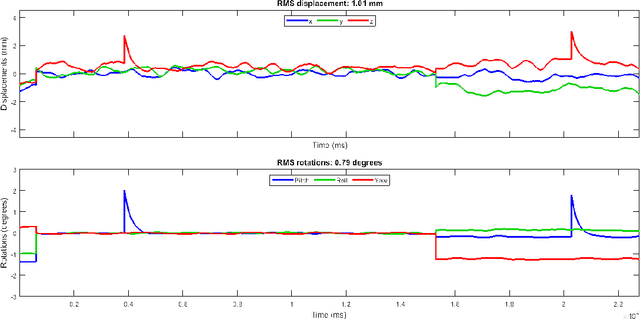

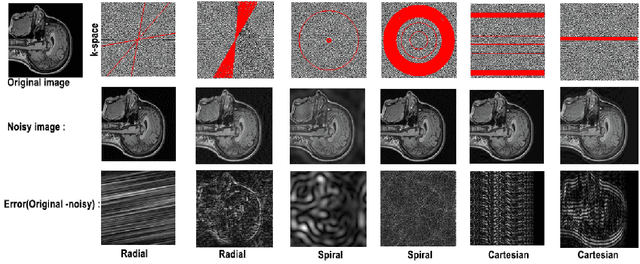
Abstract:Motion artifacts are a common occurrence in the Magnetic Resonance Imaging (MRI) exam. Motion during acquisition has a profound impact on workflow efficiency, often requiring a repeat of sequences. Furthermore, motion artifacts may escape notice by technologists, only to be revealed at the time of reading by the radiologists, affecting their diagnostic quality. Designing a computer-aided tool for automatic motion detection and elimination can improve the diagnosis, however, it needs a deep understanding of motion characteristics. Motion artifacts in MRI have a complex nature and it is directly related to the k-space sampling scheme. In this study we investigate the effect of three conventional k-space samplers, including Cartesian, Uniform Spiral and Radial on motion induced image distortion. In this regard, various synthetic motions with different trajectories of displacement and rotation are applied to T1 and T2-weighted MRI images, and a convolutional neural network is trained to show the difficulty of motion classification. The results show that the spiral k-space sampling method get less effect of motion artifact in image space as compared to radial k-space sampled images, and radial k-space sampled images are more robust than Cartesian ones. Cartesian samplers, on the other hand, are the best in terms of deep learning motion detection because they can better reflect motion.
Generative Adversarial Network in Medical Imaging: A Review
Sep 19, 2018
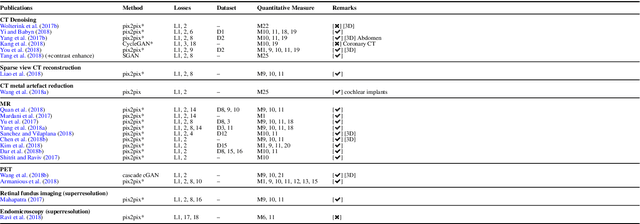
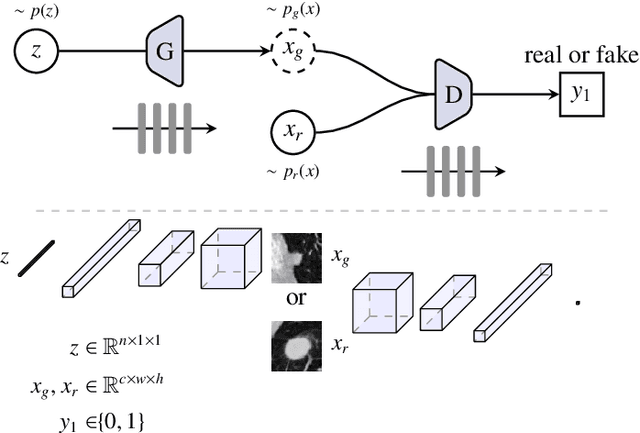

Abstract:Generative adversarial networks have gained a lot of attention in general computer vision community due to their capability of data generation without explicitly modelling the probability density function and robustness to overfitting. The adversarial loss brought by the discriminator provides a clever way of incorporating unlabeled samples into the training and imposing higher order consistency that is proven to be useful in many cases, such as in domain adaptation, data augmentation, and image-to-image translation. These nice properties have attracted researcher in the medical imaging community and we have seen quick adoptions in many traditional tasks and some novel applications. This trend will continue to grow based on our observation, therefore we conducted a review of the recent advances in medical imaging using the adversarial training scheme in the hope of benefiting researchers that are interested in this technique.
Unsupervised and semi-supervised learning with Categorical Generative Adversarial Networks assisted by Wasserstein distance for dermoscopy image Classification
Apr 10, 2018
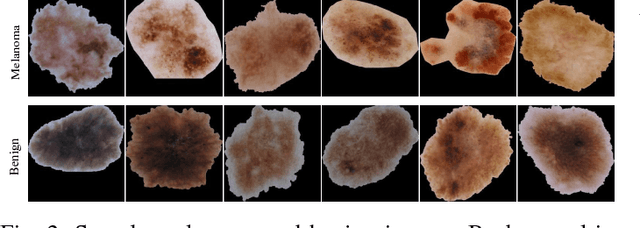


Abstract:Melanoma is a curable aggressive skin cancer if detected early. Typically, the diagnosis involves initial screening with subsequent biopsy and histopathological examination if necessary. Computer aided diagnosis offers an objective score that is independent of clinical experience and the potential to lower the workload of a dermatologist. In the recent past, success of deep learning algorithms in the field of general computer vision has motivated successful application of supervised deep learning methods in computer aided melanoma recognition. However, large quantities of labeled images are required to make further improvements on the supervised method. A good annotation generally requires clinical and histological confirmation, which requires significant effort. In an attempt to alleviate this constraint, we propose to use categorical generative adversarial network to automatically learn the feature representation of dermoscopy images in an unsupervised and semi-supervised manner. Thorough experiments on ISIC 2016 skin lesion chal- lenge demonstrate that the proposed feature learning method has achieved an average precision score of 0.424 with only 140 labeled images. Moreover, the proposed method is also capable of generating real-world like dermoscopy images.
 Add to Chrome
Add to Chrome Add to Firefox
Add to Firefox Add to Edge
Add to Edge